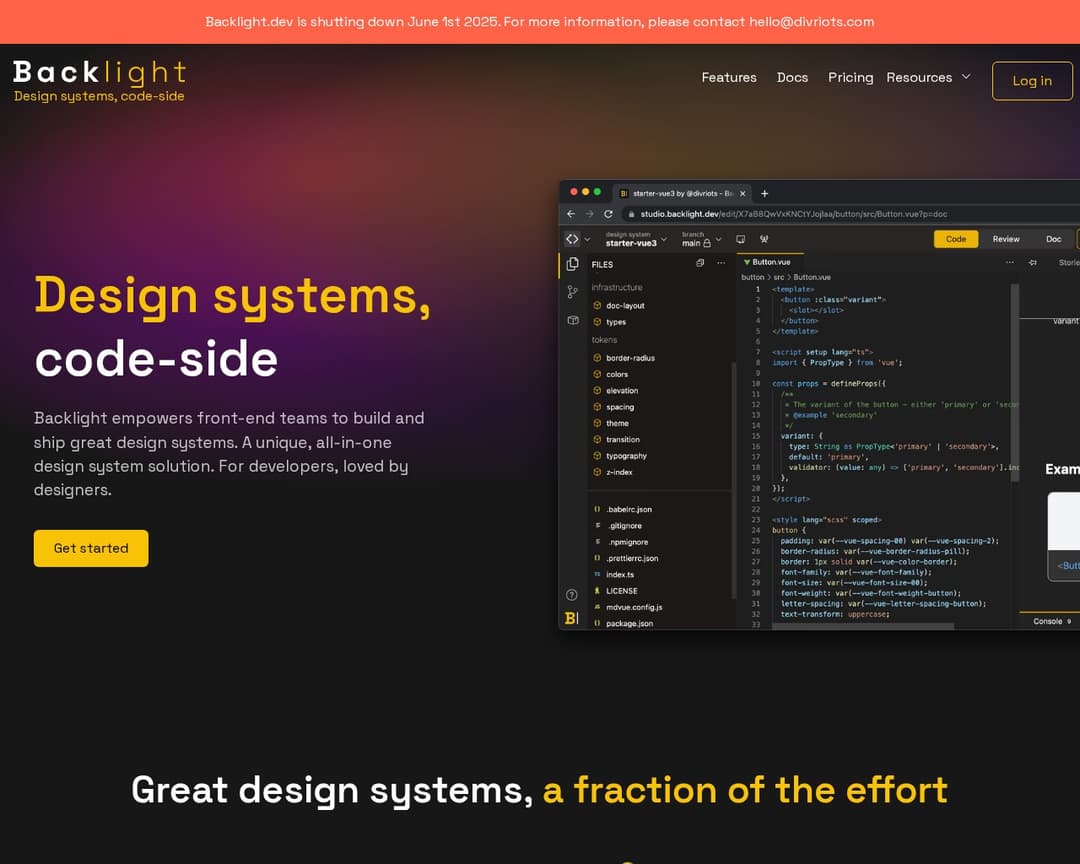Competitors
12
🚀
Discover 50+ More Competitors
This is just the tip of the iceberg. Unlock comprehensive insights into your competitive landscape.
Unlock Full ReportBacklight is a collaborative platform designed for front-end teams to build, manage, and ship design systems. It provides an online IDE, version control, visual review tools, and integrations with design tools like Figma, enabling efficient collaboration and consistent development of digital products.
5 of 5
Centralized Asset Storage
Brand Guideline Editor
Shareable Brand Guide URL
Version Control & Updates
Asset Organization & Search
7 of 13
Color Palette Definition
Typography Settings
Customizable Sections
Preview Mode
Google & Custom Fonts
Real-time Collaboration
Automated Notifications
Logo Variant Upload
Asset Generation Tools
Browser Extension Access
AI Consistency Checker
Whitelabel Agency Mode
Integration with Design & Dev Workflows
Backlight is a platform for building and managing design systems, which aligns closely with the concept of brand guideline and asset management. It offers features like centralized storage for design tokens and components (which serve as brand assets), an online editor for documentation (akin to a brand guideline editor), and instant sharing/publishing of the design system (similar to a shareable brand guide URL). While it's more code-centric and focused on design systems for front-end teams, the underlying functionalities for organizing, documenting, and sharing brand-related elements are present. The platform also supports versioning, real-time editing, and various documentation formats, which can be used to define and manage brand guidelines.

I've been using Alternative A for 6 months now and it's been fantastic. The pricing is much better and the features are actually more robust than what [Product] offers.
It handles edge cases much better and the API is actually documented properly.
Check it out at our site.
Honestly, after trying both, Competitor B wins hands down. Better customer support, cleaner interface, and they don't nickel and dime you for every feature.